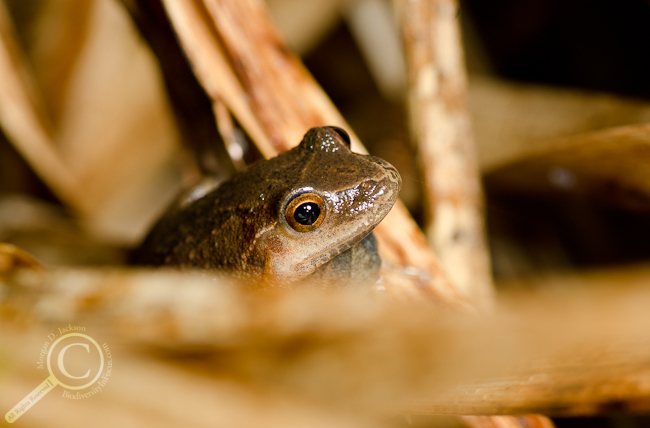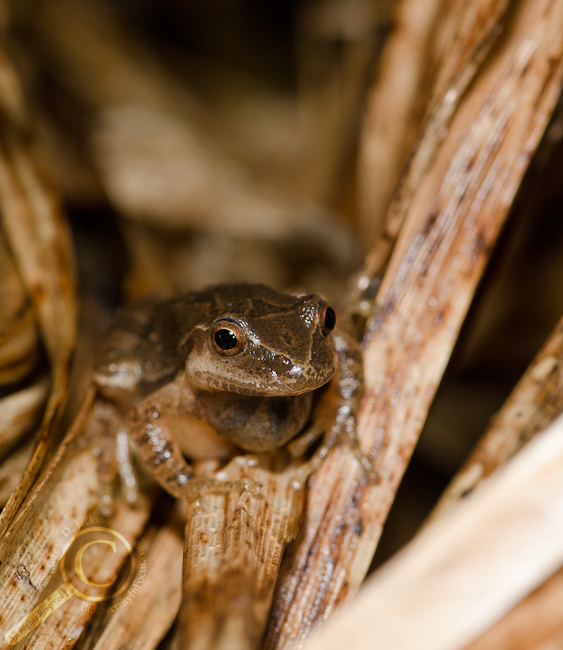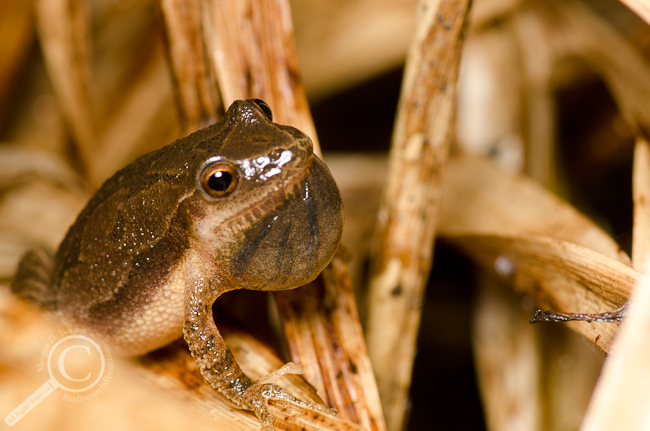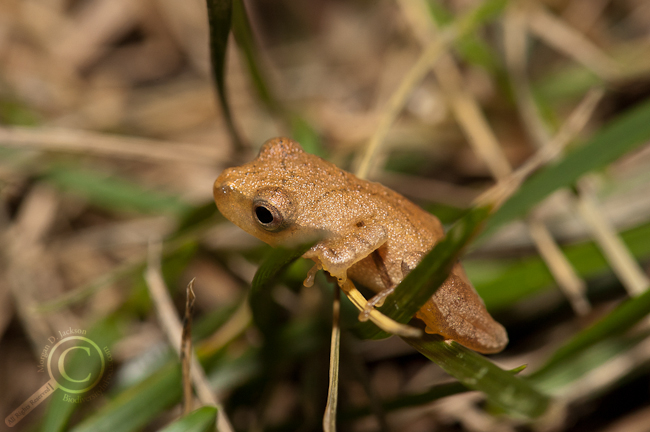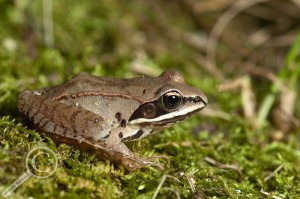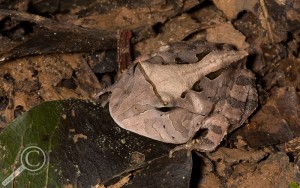This past week saw some unseasonably AWESOME weather around Southern Ontario, allowing me to break out the shorts and sandals nice and early. Better yet, our local fauna has started to emerge from their winter hiding places, with flies buzzing, ants battling, and frogs calling!
Thursday evening I went out to a local conservation area with a few of my labmates in search of the early indicators of vernal vertebrate life: spring peepers (Pseudacris crucifer). It wasn’t long until we heard the high pitched squeaks of males calling throughout a small pond, so we donned waders and headed in to the water! Of course, just because you can hear the males doesn’t mean their easy to find, especially in a mucky-bottomed pond hiding logs just waiting to drag you (and your photo gear) into the depths, and among clumps of reeds forming perfect hiding places & bandshells for their performances. Add to that dozens, if not hundreds, of calling frogs, and you have an ear-splitting distraction which makes it difficult to hone in on a single individual!
Eventually I did find a male who was out in the open and doing his best to seduce any potential mates in the area. While being in the open made it easy for me to see and photograph him, it also made it easy for him to see me coming, causing him to stop calling as soon as I crawled in close for a photo. With some patience, a better angle, and some interesting body contortions, I finally got a few photos I was happy with.
Presumably this male will eventually find himself a mate, hold on tight and contribute his spawn to the pond ecosystem. Perhaps one day his progeny will emerge as tiny froglets, like this young’un I found in Maryland a few summers back.
Funny story to finish off; when I got home Thursday evening I posted to Twitter:
Spent the evening in hip waders slogging through a pond shooting spring peepers! Frickin’ awesome to be outside shooting again!
— Morgan Jackson (@BioInFocus) March 23, 2012
It was a good lesson in word choice, as I had several followers asking why I wanted to hurt these innocent little frogs or what caliber firearm I was using… Oops! Rest assured that no spring peepers were harmed in the production of this blog post!

